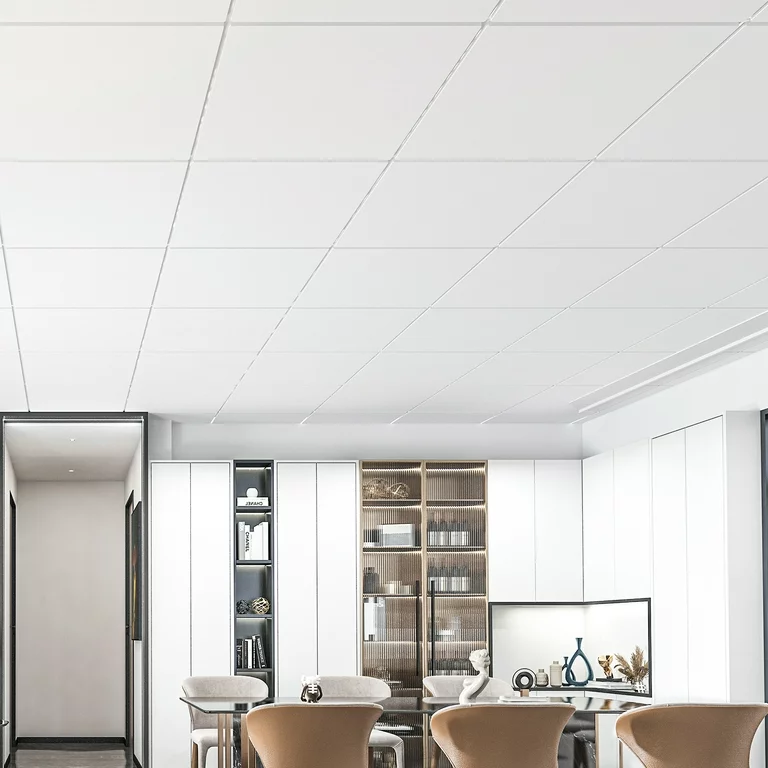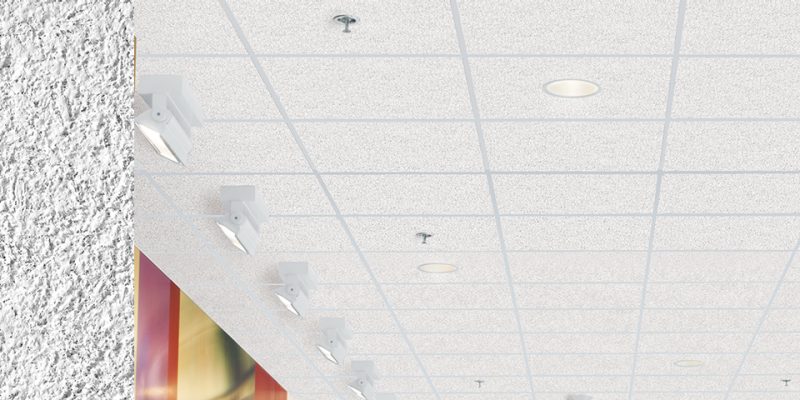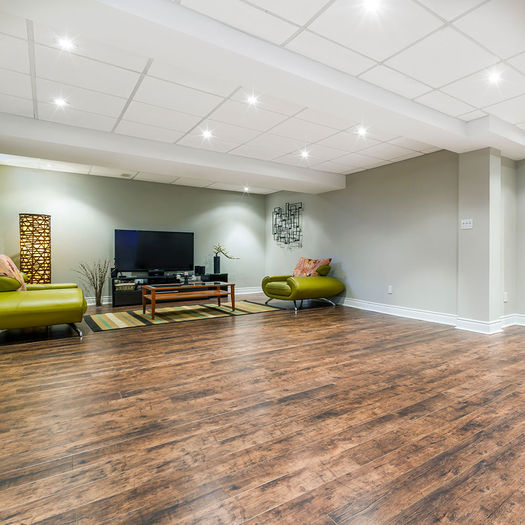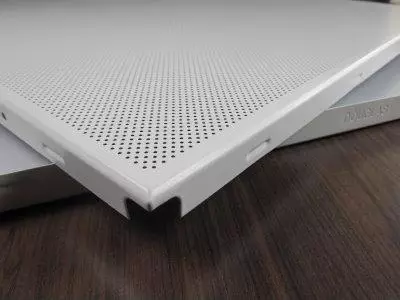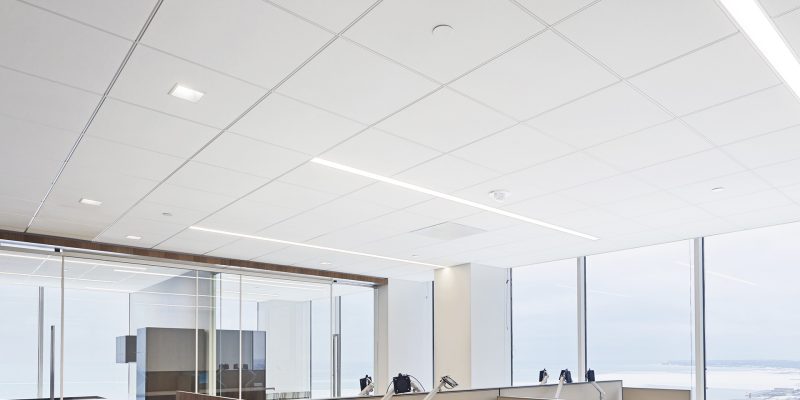When it comes to enhancing the aesthetic appeal and functionality of any space, the ceiling plays a crucial role. Fiberglass Drop Ceiling Tiles are a popular option for residential and commercial properties due to their versatility, durability, and ease of installation. Whether you’re renovating an office, designing a new home, or upgrading an industrial space, fiberglass ceiling tiles offer several benefits that can meet both aesthetic and practical needs.

In this article, we will explore the advantages of Fiberglass Drop Ceiling Tiles, how they compare to other materials, and the best installation practices. Additionally, we’ll discuss how you can use them to elevate the look of your space while maintaining functionality and cost-effectiveness.
What Are Fiberglass Drop Ceiling Tiles?
Fiberglass Drop Ceiling Tiles are a type of suspended ceiling system used in both residential and commercial applications. Made primarily from fiberglass materials, these tiles are designed to be placed into a grid framework, which “drops” the tiles into place. Unlike traditional ceilings, which are installed directly on the structural ceiling, drop ceilings are suspended below the existing ceiling, creating a space between the tiles and the actual ceiling.
Fiberglass, as a material, is known for its lightweight nature, thermal insulation properties, and soundproofing qualities. These attributes make fiberglass ceiling tiles a popular choice for many different environments, ranging from homes to industrial spaces.
Read too: Shiplap Ceiling in Kitchen: A Timeless Trend for a Stylish and Cozy Space
Advantages of Fiberglass Drop Ceiling Tiles
There are several reasons why Fiberglass Drop Ceiling Tiles have become a preferred option for both residential and commercial properties. Below are some of the key benefits of choosing fiberglass ceiling tiles:
1. Durability and Longevity
One of the most significant advantages of Fiberglass Drop Ceiling Tiles is their exceptional durability. Fiberglass tiles are resistant to many common issues that can affect other types of ceiling tiles, such as:
- Water Damage: Fiberglass is naturally water-resistant, making these tiles ideal for high-humidity areas like kitchens, bathrooms, or commercial kitchens.
- Mold and Mildew: Due to their water-resistant properties, fiberglass tiles are less prone to mold and mildew growth, ensuring a healthier environment.
- Fire Resistance: Fiberglass has fire-retardant properties, which help reduce the spread of flames in case of a fire, offering an added layer of safety.
These properties make fiberglass ceiling tiles a long-lasting investment for any space.
2. Soundproofing Benefits
Fiberglass is an excellent sound-absorbing material, making Fiberglass Drop Ceiling Tiles ideal for spaces that require noise reduction. Whether it’s in an office, home theater, or commercial setting, these tiles help to minimize the transmission of sound between rooms and reduce overall noise levels. This can be especially beneficial in open-plan offices, conference rooms, or any environment where quiet and focus are necessary.
3. Aesthetic Flexibility
Fiberglass Drop Ceiling Tiles come in a variety of designs, textures, and finishes, allowing you to create a custom look for any room. Whether you’re looking for a modern, sleek design or a more traditional look, fiberglass tiles can suit different styles. They are also available in various colors and patterns, offering flexibility in design.
For example, textured fiberglass tiles can mimic the appearance of plaster or drywall, giving a sophisticated, clean finish. On the other hand, smooth fiberglass tiles can provide a sleek and contemporary appearance for modern spaces. With the ability to choose different tile styles, you can easily match the overall aesthetic of your space.
4. Easy Installation and Maintenance
Installing Fiberglass Drop Ceiling Tiles is relatively simple compared to traditional ceiling installations. The tiles fit into a pre-designed grid system, which can be suspended from the existing ceiling. This installation process requires minimal tools and expertise, making it accessible for DIY enthusiasts. Moreover, if a tile becomes damaged or dirty, it can be replaced easily without disrupting the entire ceiling.
When it comes to maintenance, fiberglass tiles are also easy to clean. Regular dusting or wiping with a damp cloth is often all that is needed to keep them looking fresh. They also do not require regular painting or sealing, making them a low-maintenance ceiling option.
5. Energy Efficiency
Fiberglass is a natural insulator, meaning that Fiberglass Drop Ceiling Tiles can help regulate the temperature in your space. During colder months, these tiles help retain heat, keeping your space warmer. In the summer, they can help keep the space cooler by insulating against hot air. This thermal regulation can reduce the need for excessive heating or cooling, leading to lower energy bills and improved energy efficiency.
Types of Fiberglass Drop Ceiling Tiles
When choosing Fiberglass Drop Ceiling Tiles, it’s important to consider the different types available, each with its unique features and advantages. Here are some of the most popular options:
1. Smooth Fiberglass Ceiling Tiles
Smooth fiberglass tiles provide a sleek, clean look that is perfect for modern and minimalist spaces. These tiles are easy to maintain, as their smooth surface does not trap dirt or dust, making them ideal for spaces where cleanliness is important, such as hospitals or laboratories.
2. Textured Fiberglass Ceiling Tiles
Textured fiberglass tiles offer a more decorative option, featuring a raised pattern that mimics the look of plaster or drywall. These tiles are a great option if you want to add visual interest and depth to your ceiling. They work well in both residential and commercial settings, including offices, retail spaces, and restaurants.
3. Acoustic Fiberglass Ceiling Tiles
Acoustic fiberglass tiles are designed specifically to enhance sound absorption. These tiles are ideal for environments where sound control is crucial, such as theaters, offices, or meeting rooms. Acoustic tiles have a porous surface that helps absorb sound waves, reducing echo and noise levels in a room.
4. Fire-Rated Fiberglass Ceiling Tiles
For spaces that require added fire protection, fire-rated fiberglass tiles are available. These tiles are specifically designed to meet building codes and regulations for fire resistance, making them an excellent choice for high-risk areas such as kitchens, utility rooms, or industrial facilities.
How to Install Fiberglass Drop Ceiling Tiles
Installing Fiberglass Drop Ceiling Tiles can be a straightforward process if you follow these steps:
1. Measure Your Space
Before beginning installation, measure the dimensions of your room to determine how many tiles and what size of grid system you will need. It’s important to account for any obstructions, such as light fixtures or vents.
2. Install the Grid System
Start by installing the grid system, which is suspended from the existing ceiling. The grid will serve as the support structure for the fiberglass tiles. Use a level to ensure that the grid is straight and secure. Follow the manufacturer’s instructions for the correct spacing and support requirements.
3. Place the Fiberglass Tiles
Once the grid system is in place, carefully insert the Fiberglass Drop Ceiling Tiles into the grid. Ensure that the tiles fit snugly and are aligned properly. If needed, trim the edges of the tiles to fit any gaps or corners.
4. Finishing Touches
After the tiles are installed, check for any gaps or misalignment. If necessary, adjust the tiles for a seamless, polished look. Install any lighting fixtures or other accessories to complete the ceiling setup.
Conclusion
Fiberglass Drop Ceiling Tiles offer a perfect combination of functionality, durability, and design flexibility for various spaces. Whether you’re looking to reduce noise, enhance insulation, or simply update the look of your space, fiberglass ceiling tiles provide an excellent solution. Their lightweight nature, ease of installation, and low maintenance requirements make them an ideal choice for both residential and commercial applications.
By selecting the right type of fiberglass ceiling tiles and ensuring proper installation, you can create a stylish and functional ceiling that enhances the overall atmosphere of your space. Whether for a home, office, or industrial setting, Fiberglass Drop Ceiling Tiles will provide long-lasting results and meet your aesthetic and practical needs.











